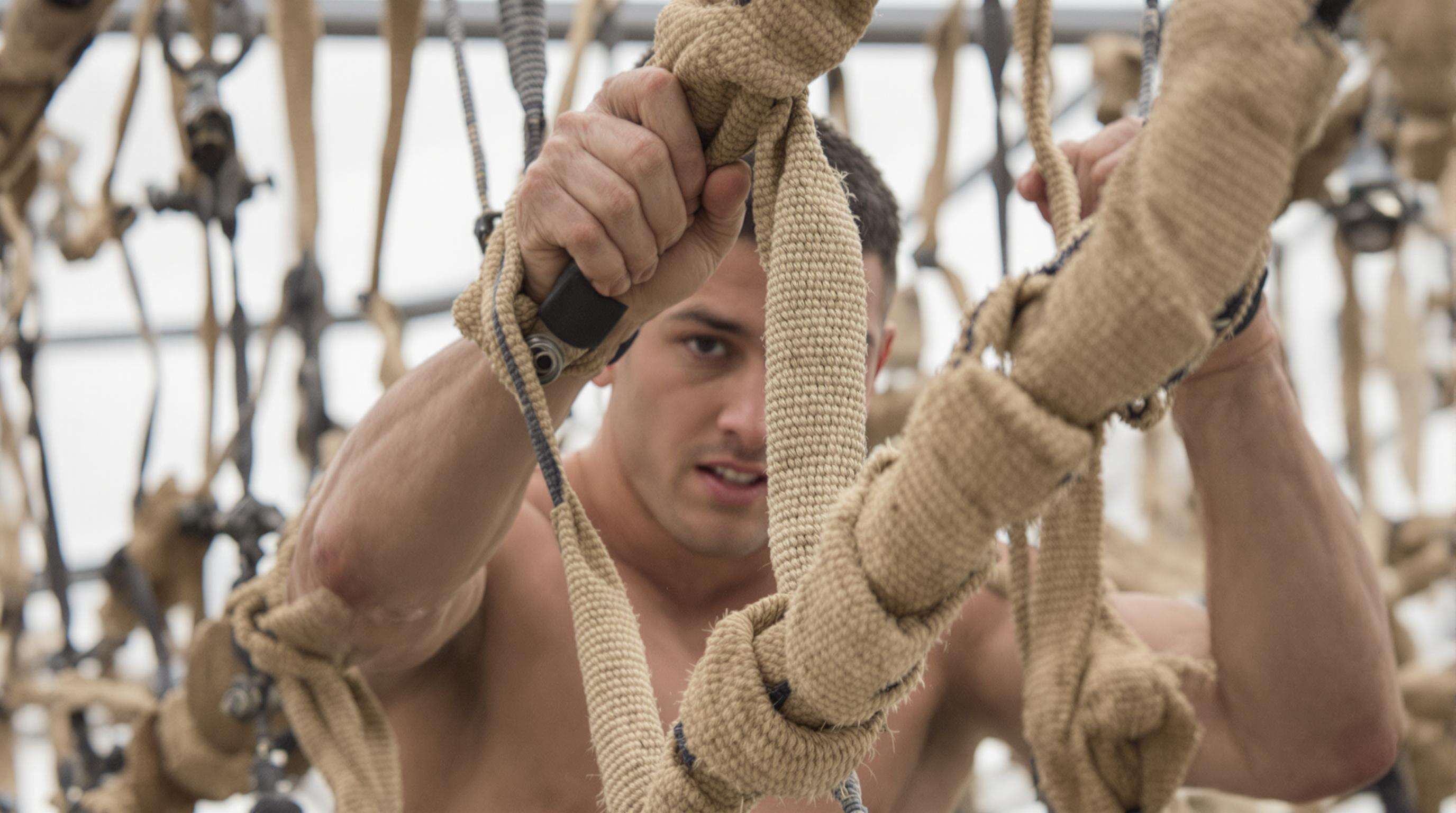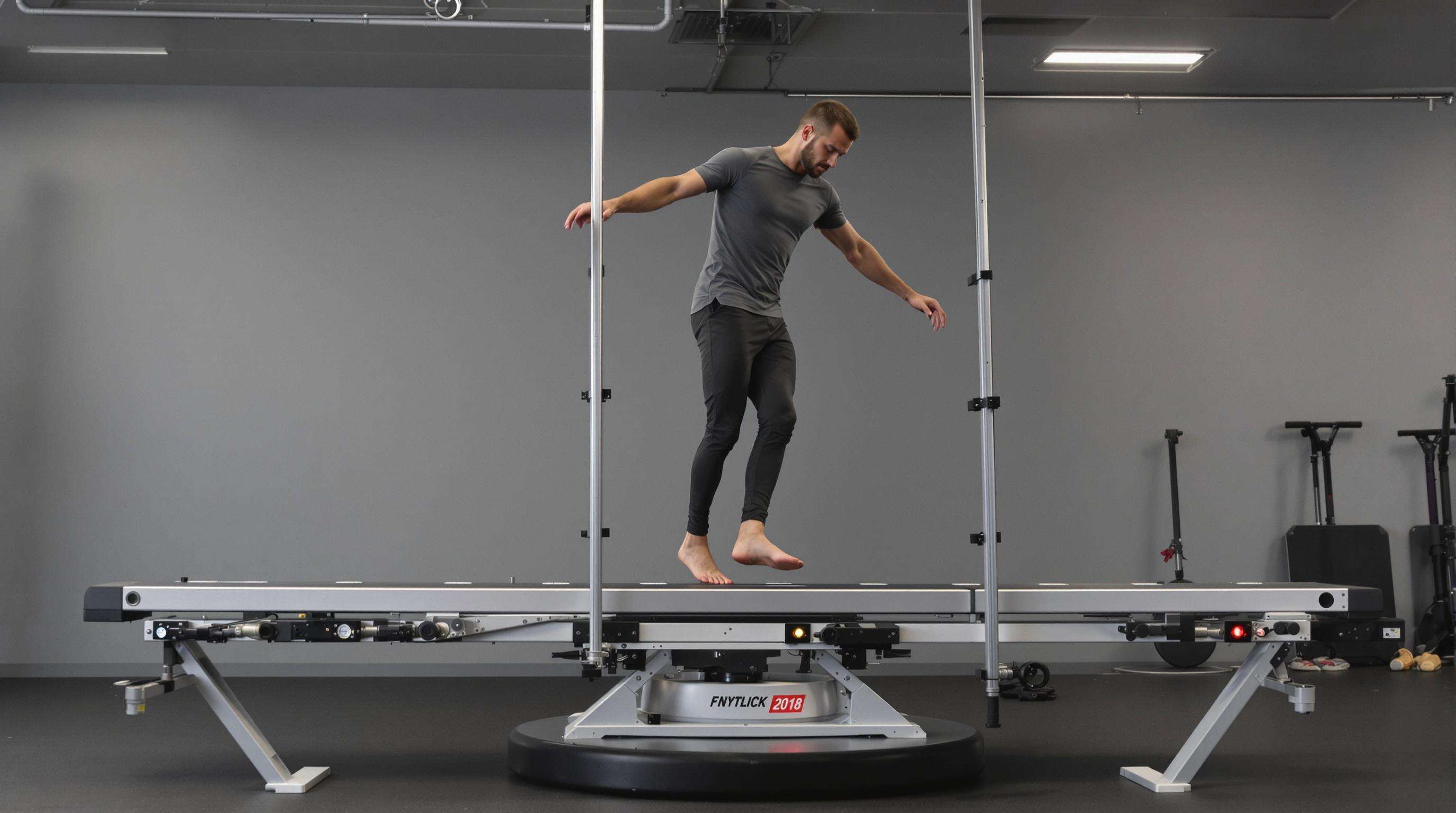Designing High-Performance Ninja Course Equipment for Competitive Athletes
Maximizing Grip and Core Strength with Performance-Driven Ninja Course Equipment

The Role of Grip Strength in Competitive Ninja Performance
Strong grip really matters in ninja competitions. Athletes need to hold on during tough hangs and move quickly between all sorts of challenging obstacles throughout the course. According to some recent studies from the 2023 Functional Fitness Report, those who can maintain their grip longer finish courses about 23% quicker than others who struggle with fatigue. The gear used nowadays has special textured holds and spinning handles that mimic different kinds of force directions. This helps train the forearms not just for quick bursts of power but also for lasting strength when competing against time limits and difficult terrain.
Designing Adjustable Handles and Tension-Variable Elements for Progressive Grip Training
Adjustable handles with modular resistance settings enable athletes to progressively challenge their grip strength. Tension-variable climbing rails, for example, can be reconfigured in 15° increments to isolate finger flexors or train full-hand engagement. This adaptability supports a structured progression from foundational strength to competition-specific demands, ensuring continual neuromuscular development.
How Obstacle Transitions Demand Isometric and Eccentric Core Control
When moving between obstacles like swinging from ropes to grabbing onto ledges, athletes need to switch quickly between holding their core muscles tight and letting them lengthen under tension. During dismounts, they have to keep their torso stable even though they're absorbing pretty serious impacts - sometimes equal to two and a half times their own body weight. That's why newer training gear includes those wobbly transition platforms. These aren't just random additions; they actually force athletes to think on their feet and maintain balance in unpredictable situations, which is exactly what happens in competition settings where nothing goes quite as planned.
Innovations in Swinging and Pendulum-Based Core Challenges
When athletes use pendulum systems featuring counterweights, they have to work against rotational forces which really gets those side abs and deep core muscles firing. Recent research from 2024 showed something interesting too: people who did pendulum drills had about a third better control when they were in the air than those sticking to regular core workouts. What makes these tools so effective is how they boost quick hip movements and stabilize rotation during twists and turns. That kind of strength matters a lot when facing challenges such as climbing over twisted walls or swinging across those tricky floating monkey bars at the park.
Building Functional Obstacles for Full-Body Strength and Athletic Integration
Linking Obstacle Design to Compound Movement Patterns
Modern ninja courses have shifted toward equipment that focuses on movements involving multiple joints, similar to what competitors actually face during events. The obstacles now require things like hip hinges reminiscent of deadlifts, reaching motions that twist the body, and powerful pull-ups that engage several muscle groups at once. These challenges work the backside muscles, build grip strength over time, and sharpen body awareness all at the same time. A recent study from the US Army Human Performance Research Center found something interesting: when soldiers trained with these complex movements instead of just lifting weights, they finished obstacle courses 24% faster than those who stuck to traditional strength training. This finding makes sense for anyone serious about becoming an elite ninja competitor.
Integrating Pull, Push, and Carry Elements in Ninja Course Equipment
Advanced systems integrate three key functional modalities:
- Overhead pulling (e.g., rope ascents, inverted ladder climbs)
- Horizontal pushing (e.g., traverse walls requiring chest-driven propulsion)
- Loaded carries (e.g., weighted sled drags between obstacles)
This triad reflects the functional strength demands documented in military training research, where task-specific conditioning reduces injury risk by 18% (US Army H2F 2023).
Functional Fitness and Athletic Performance: Bridging Gym Training with Course Execution
Studies show elite ninja athletes can transfer about 37 percent more gym strength to real course performance than regular trainees according to the Journal of Sports Engineering 2024. They get this edge by working out on rails set at just the right angle for competition pull ups. The surfaces they climb are textured exactly like official competition holds too. Most importantly, these athletes practice carrying weights equal to around two thirds to three quarters of their own body weight. All these adjustments help bridge the gap between strength training in the gym and actually performing under pressure during competitions.
Engineering Agility and Coordination Through Modular, Sensor-Enhanced Systems

Engineering Unstable Surfaces for Dynamic Balance Challenges
Training equipment with rotating bases and adjustable foot positions creates conditions similar to what people face in everyday life, which helps build better balance skills. Research from last year suggests these moving surfaces can boost balance improvement around 20 something percent compared to regular stationary equipment. When trainees work with obstacles like wobbly beams or hanging wall sections, they constantly need to tweak their handholds and shift their body weight, something that sharpens their sense of where their body is in space. The best part about these systems is how they can be adjusted step by step. Coaches simply add new challenges as athletes get stronger, making sure everyone progresses at their own pace while staying safe throughout the process.
Designing Sequential Elements for Rhythmic Movement Flow
Obstacle sequencing transforms isolated actions into fluid, rhythm-driven routines. Timed rope swings into wall jumps, for example, require synchronization of upper-body power and precise foot placement—mirroring split-second timing demands in competition. Modular connectors enable facilities to reconfigure layouts weekly, preventing neuromuscular plateaus associated with fixed-course training (Ponemon Institute 2022).
Using Sensor-Integrated Platforms to Track Coordination and Performance Metrics
Footholds equipped with force sensors along with IMUs provide immediate feedback about how weight is distributed during movements and how efficient those movements really are. These systems look at important numbers like ground contact time which should ideally stay below 140 milliseconds when transitioning between positions, plus they track swing path accuracy within a three degree margin either way. According to research published last year in the Sports Engineering Journal, athletes who received this kind of sensor feedback managed to cut down on unnecessary movements by nearly 18 percent over time. For coaches, there's now access to online dashboards connected through the cloud where they can watch how performance develops throughout different stages of training programs.
Enabling Skill Progression and Adaptability in Ninja Course Equipment Design
Implementing Modular Obstacle Systems for Structured Skill Development
The concept of modularity plays a big role in how modern ninja courses are put together these days, helping both beginners and experienced athletes alike. Facilities can swap out different parts like those spinning monkey bars or walls that adjust their tightness, letting coaches tweak things around with spacing, heights, and where people grab hold. Some research from last year showed something interesting too: places that had these modular systems saw about a third fewer cases where athletes hit their growth limits compared to old fashioned fixed setups. Industry folks have been talking about how adaptable equipment makes workouts stay fresh because it basically catches athletes off guard with new challenges all the time.
Adapting Ninja Course Equipment for Multiple Skill Levels Without Compromising Safety
Getting the right balance between difficulty levels takes careful engineering work so challenges match what climbers can actually handle. For beginners, handholds that are wider and have some texture help build their confidence, whereas advanced climbers face off against smaller holds with smooth surfaces that test their skills. When it comes to safety, things like landing areas designed to absorb impacts and those auto locking clips have made a real difference. The Safety Standards Institute reported last year that these features cut down on sudden injuries by almost 30% across multi level climbing systems. And when gyms combine adjustable gear with proper instruction from coaches, they see even better results. Studies show this approach reduces ongoing strain injuries by around 40% over people who just figure things out on their own without guidance.
Balancing Standardization and Customization in Competitive Ninja Training Equipment
The best systems manage to mix standardized components meant for competitions with features that can be adjusted based on what specific facilities need. Portable equipment featuring those wall mounted fold away parts makes it possible for any space to switch between regular floor layouts and full blown training courses within just about 15 minutes flat. These kinds of mixed design approaches boost how much training gets done each week by around 60 percent without sacrificing the technical standards required for actual competitions. When we talk about predefined setup options working alongside modules that can be changed up, coaches are able to create environments similar to what they see on TV during big events but still modify exercises according to what athletes actually require.
Innovating Space-Efficient and Competition-Inspired Ninja Course Equipment
Competitive athletes need equipment that captures the intensity of televised events while fitting within modern facility constraints. By reverse-engineering obstacles from shows like American Ninja Warrior, designers deliver scalable systems that maintain technical rigor without sacrificing space efficiency.
Reverse-Engineering Iconic American Ninja Warrior Obstacles for Training Use
Recreating famous obstacles such as the Warped Wall and Salmon Ladder takes some serious engineering work to get right for top athletes. These days many training systems come with adjustable grips and built in safety features that let people push harder without hurting themselves so much. A recent study on gym equipment showed that these portable units take up about half the floor space of regular equipment setups, which makes them great for smaller training facilities or home gyms where space matters a lot.
Scaling Down TV-Grade Obstacles for High-Performance Training Facilities
Most competition grade obstacles stand over 20 feet tall, which simply doesn't fit in regular gym spaces. The new wave of training equipment solves this problem with aluminum frames that weigh next to nothing and collapsible anchor systems. Take the famous Spider Climb challenge for instance it can now be scaled down to about 12 feet while still keeping all the movement patterns intact. Gyms adopting these compact versions typically manage to fit three or four different obstacles where they used to only have room for one single piece of equipment. We've seen this happen across dozens of facility renovations lately, transforming how training areas are designed and utilized.
Maximizing Training Density with Compact, Multi-Functional Ninja Course Equipment
Leading manufacturers now integrate up to five training modalities into single structures:
- Foldable traverse walls with interchangeable hold patterns
- Hybrid rigs combining monkey bars, rope climbs, and lateral movement challenges
- Sensor-equipped beams tracking grip endurance metrics
A 2023 survey found athletes using multi-functional systems improved obstacle transition speed by 22% compared to traditional setups, proving that space efficiency and performance gains can coexist.
Frequently Asked Questions (FAQ)
Why is grip strength significant in ninja courses?
Grip strength is critical in ninja courses because it allows athletes to hold onto obstacles during challenging moves and maintain speed throughout the course.
What are pendulum-based core challenges?
Pendulum-based core challenges involve exercises using pendulum systems to engage rotational forces, enhancing deep core and side abdominal muscle engagement.
How do modular systems benefit ninja training facilities?
Modular systems benefit training facilities by allowing equipment adjustments to suit different skill levels and keep workouts fresh, reducing growth limits and injuries.
How are iconic TV obstacles adapted for training facilities?
TV obstacles are adapted for training facilities by using compact versions with lightweight structures, maintaining movement patterns while fitting within space constraints.

